-
 Bitcoin
Bitcoin $81,725.8617
6.04% -
 Ethereum
Ethereum $1,595.4823
7.95% -
 Tether USDt
Tether USDt $0.9993
-0.02% -
 XRP
XRP $1.9994
9.53% -
 BNB
BNB $577.1239
3.55% -
 USDC
USDC $0.9999
-0.01% -
 Solana
Solana $114.0227
6.99% -
 Dogecoin
Dogecoin $0.1557
6.44% -
 TRON
TRON $0.2411
4.90% -
 Cardano
Cardano $0.6213
9.35% -
 UNUS SED LEO
UNUS SED LEO $9.4123
2.93% -
 Chainlink
Chainlink $12.3356
8.60% -
 Avalanche
Avalanche $17.9497
9.52% -
 Toncoin
Toncoin $2.9914
-1.61% -
 Stellar
Stellar $0.2336
6.25% -
 Hedera
Hedera $0.1694
12.26% -
 Shiba Inu
Shiba Inu $0.0...01198
9.35% -
 Sui
Sui $2.1355
9.15% -
 MANTRA
MANTRA $6.7139
7.48% -
 Bitcoin Cash
Bitcoin Cash $293.9383
8.01% -
 Litecoin
Litecoin $73.7326
3.70% -
 Polkadot
Polkadot $3.5045
1.98% -
 Dai
Dai $0.9999
-0.01% -
 Bitget Token
Bitget Token $4.2721
4.17% -
 Ethena USDe
Ethena USDe $0.9987
0.00% -
 Hyperliquid
Hyperliquid $14.0933
12.91% -
 Pi
Pi $0.5941
5.51% -
 Monero
Monero $204.5106
5.17% -
 Uniswap
Uniswap $5.1756
7.13% -
 OKB
OKB $53.3130
3.39%
How to set the gas fee in Bybit Wallet?
Bybit Wallet simplifies gas fee setting with preset options like "Slow," "Average," and "Fast," helping users manage transaction costs based on network congestion.
Apr 01, 2025 at 11:42 pm
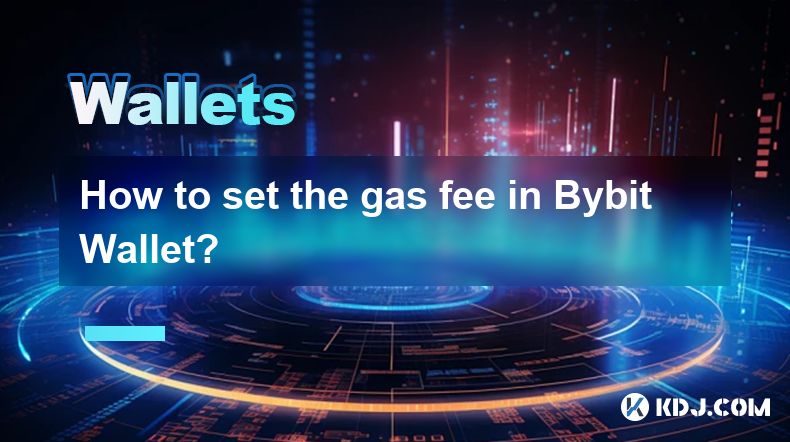
Understanding Gas Fees in Bybit Wallet
Bybit Wallet, like other Ethereum-based wallets, requires gas fees to process transactions. These fees compensate miners for verifying and adding your transaction to the blockchain. The amount of gas you need depends on the complexity of your transaction; sending ETH requires less gas than interacting with a complex DeFi application. Understanding gas fees is crucial to avoid unexpected costs or transaction failures. Gas is measured in Gwei, a unit of ETH. Higher Gwei values mean higher transaction fees, leading to faster processing times.
Setting the Gas Fee: A Step-by-Step Guide
Bybit Wallet doesn't directly allow you to manually set a precise Gwei value like some other wallets. Instead, it offers a simplified approach. The platform provides suggested gas fee options based on network congestion. This dynamic adjustment helps ensure your transaction gets processed within a reasonable timeframe. You don't have direct control over the specific Gwei amount, but you can choose from preset options.
Step 1: Initiate a Transaction: Begin the process of sending cryptocurrency or interacting with a decentralized application (DApp) within the Bybit Wallet.
Step 2: Review the Gas Fee Options: Before confirming the transaction, Bybit Wallet will display several gas fee options. These options are usually categorized as "Slow," "Average," and "Fast."
Step 3: Select Your Preferred Speed: Choose the gas fee option that best suits your needs. A "Slow" option will be cheaper but take longer to process. A "Fast" option will cost more but ensure quicker confirmation. The "Average" option provides a balance between speed and cost.
Step 4: Confirm the Transaction: Once you've selected your preferred gas fee option, review all transaction details carefully, including the total cost including the gas fee. Then, confirm the transaction to proceed.
Step 5: Monitor the Transaction: After confirmation, you can monitor the transaction status within the Bybit Wallet. The transaction's progress and confirmation time will depend on the chosen gas fee option and network conditions.
Factors Affecting Gas Fees
Several factors influence the gas fees you'll encounter in Bybit Wallet. Network congestion is a primary driver. When the Ethereum network is busy, gas fees tend to be higher. The complexity of your transaction also plays a role; more complex interactions require more gas. Finally, the time of day can affect fees; peak hours often see higher demand and thus higher gas prices.
Understanding Gwei and its Relation to Gas Fees
Gwei is a unit of ETH. One ETH equals 1 billion Gwei (10^9 Gwei). When setting gas fees, you're essentially specifying the price you're willing to pay per unit of gas. Higher Gwei values mean higher gas fees, resulting in faster transaction processing. Conversely, lower Gwei values lead to lower fees but slower confirmation times. Bybit Wallet's simplified approach abstracts away the direct Gwei manipulation, making it user-friendly.
Gas Fee Optimization Strategies
While Bybit Wallet doesn't offer granular control, you can still optimize your gas fees. Choosing the "Average" or "Slow" options during periods of low network congestion can significantly reduce costs. Avoid peak hours when possible, as transaction demand is usually highest then. If your transaction isn't time-sensitive, opting for a slower confirmation will save you money.
What if my transaction fails?
If your transaction fails, it's usually due to insufficient gas. Bybit Wallet will usually display an error message explaining the reason for failure. You may need to try again with a higher gas fee option. Alternatively, check the network status to ensure there are no major issues affecting transactions. In rare cases, a bug or issue with the smart contract you're interacting with could be the culprit.
Can I change the gas fee after initiating a transaction?
No, once you've initiated a transaction and selected a gas fee in Bybit Wallet, you cannot change it. This is a standard practice across most crypto wallets to maintain transaction integrity and prevent manipulation. Always double-check your transaction details before confirmation.
What happens to the unused gas?
Any unused gas is automatically refunded to your Bybit Wallet. The amount refunded depends on the difference between the gas you paid for and the gas actually consumed by the transaction. This refund is usually automatic and you don't need to take any further action.
Why are gas fees so high sometimes?
High gas fees are primarily due to network congestion. When many users are simultaneously making transactions on the Ethereum network, the demand for processing power increases, driving up the price of gas. This is a common characteristic of decentralized blockchains and not specific to Bybit Wallet.
Is there a way to predict gas fees?
Predicting gas fees with absolute accuracy is difficult due to the dynamic nature of the Ethereum network. However, various websites and tools provide real-time gas fee estimates. These estimates can help you make informed decisions about when to execute your transactions to potentially minimize costs. However, remember that these are only estimations, and actual fees might vary slightly.
Common Questions and Answers
Q: What is Gwei?
A: Gwei is a smaller unit of Ether (ETH), used to measure gas fees on the Ethereum network. 1 ETH = 1,000,000,000 Gwei.
Q: Why are gas fees necessary?
A: Gas fees incentivize miners to process transactions and secure the Ethereum network.
Q: Can I avoid gas fees entirely?
A: No, gas fees are inherent to the Ethereum blockchain's functionality.
Q: How can I reduce gas fees?
A: Choose slower transaction speeds when possible, and avoid peak network congestion times.
Q: What if my transaction fails due to insufficient gas?
A: You'll need to try again with a higher gas fee. Check for network issues as well.
Q: Where can I find more information about gas fees?
A: Consult the Bybit Wallet help center or explore resources dedicated to Ethereum gas fees online.
Disclaimer:info@kdj.com
The information provided is not trading advice. kdj.com does not assume any responsibility for any investments made based on the information provided in this article. Cryptocurrencies are highly volatile and it is highly recommended that you invest with caution after thorough research!
If you believe that the content used on this website infringes your copyright, please contact us immediately (info@kdj.com) and we will delete it promptly.
- Bitcoin (BTC 0.67%) is inherently an outsider's challenge to the traditional financial system
- 2025-04-10 18:35:14
- Auradine Launches Teraflux AH3880 Bitcoin Mining Rig Amidst U.S.-China Trade Tensions
- 2025-04-10 18:35:14
- CDARI Partners with SFT Protocol to Bring Blockchain to E-commerce
- 2025-04-10 18:30:13
- After a Dramatic Shake-up, Realms of Alurya (RoA) Is Officially Parting Ways with Treasure and Migrating to the Ronin Network
- 2025-04-10 18:30:13
- Magic Eden Acquires Slingshot, the Decentralised Trading App, to Expand Its Footprint Beyond NFTs
- 2025-04-10 18:25:13
- Bitcoin surged above $84,000 after Donald Trump flipped the global tariff plans over his head
- 2025-04-10 18:25:13
Related knowledge
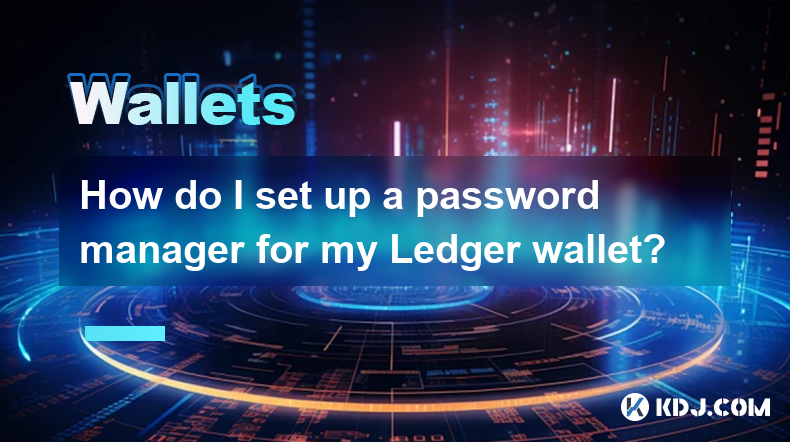
How do I set up a password manager for my Ledger wallet?
Apr 10,2025 at 11:50am
Setting up a password manager for your Ledger wallet is an essential step in enhancing the security of your cryptocurrency assets. A password manager helps you generate, retrieve, and keep track of complex passwords, ensuring that your Ledger wallet remains secure. In this article, we will guide you through the process of setting up a password manager s...
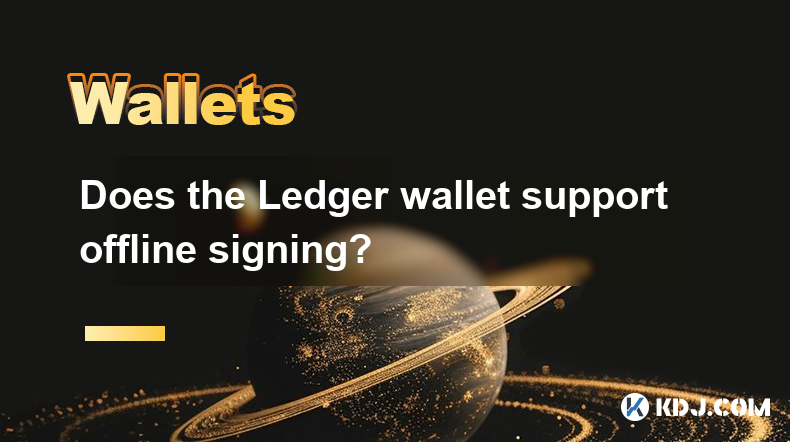
Does the Ledger wallet support offline signing?
Apr 09,2025 at 04:49am
Introduction to Ledger Wallet and Offline SigningThe Ledger wallet is a popular hardware wallet used by cryptocurrency enthusiasts to securely store their digital assets. One of the key features that users often inquire about is offline signing. Offline signing, also known as cold signing, is a security measure that allows users to sign transactions wit...
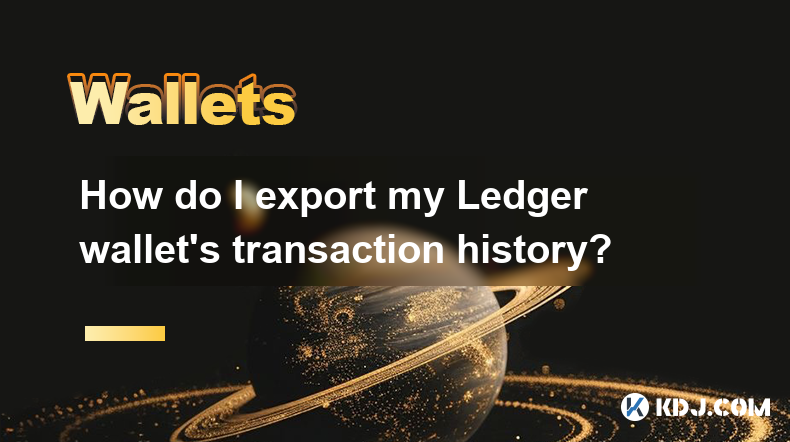
How do I export my Ledger wallet's transaction history?
Apr 10,2025 at 10:15am
Exporting your Ledger wallet's transaction history can be a crucial step for managing your cryptocurrency assets effectively. Whether you need this data for tax purposes, portfolio tracking, or simply for record-keeping, understanding how to access and export this information is essential. In this article, we will guide you through the process of export...
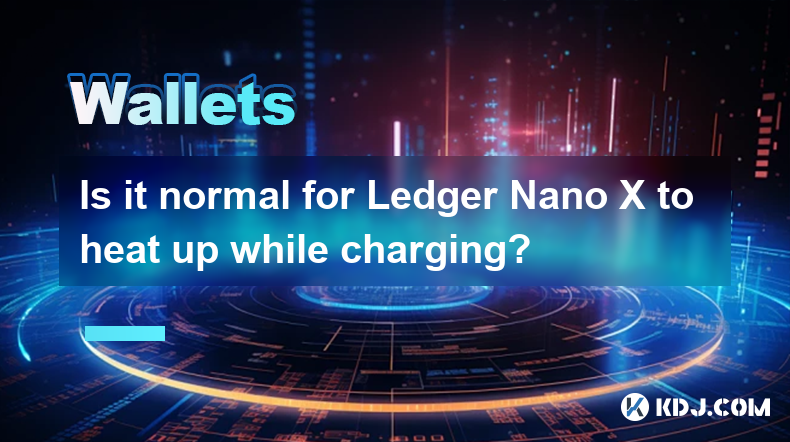
Is it normal for Ledger Nano X to heat up while charging?
Apr 09,2025 at 04:01pm
Is it normal for Ledger Nano X to heat up while charging? When using a hardware wallet like the Ledger Nano X, it's common for users to have concerns about the device's behavior, especially when it comes to heat generation during charging. This article will delve into the reasons behind the Ledger Nano X heating up while charging, whether it's normal, a...
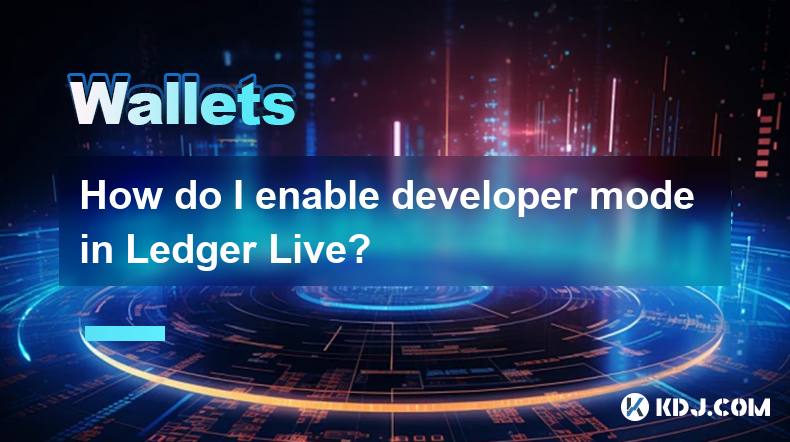
How do I enable developer mode in Ledger Live?
Apr 10,2025 at 05:49am
Enabling developer mode in Ledger Live can be a useful feature for advanced users who want to access experimental features or test new functionalities. This guide will walk you through the process of enabling developer mode in Ledger Live, ensuring you understand each step thoroughly. Understanding Developer ModeDeveloper mode in Ledger Live allows user...
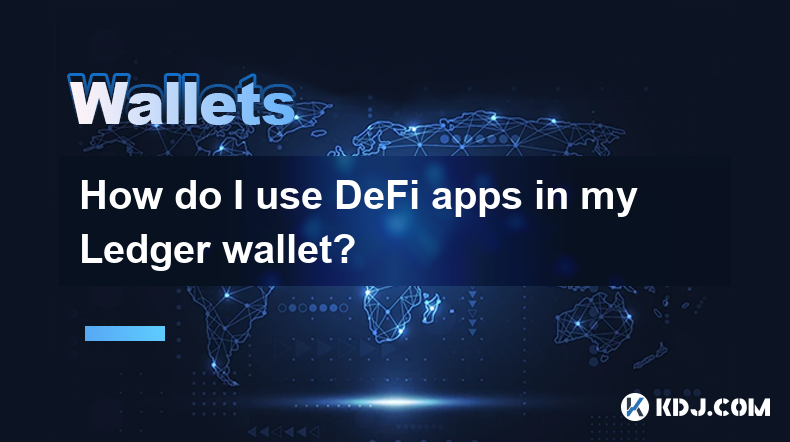
How do I use DeFi apps in my Ledger wallet?
Apr 10,2025 at 11:28am
Using DeFi apps with your Ledger wallet allows you to interact with decentralized finance platforms securely. This guide will walk you through the process of setting up and using DeFi apps with your Ledger device, ensuring your assets remain safe while you explore the world of DeFi. Setting Up Your Ledger Wallet for DeFiBefore you can use DeFi apps with...

How do I set up a password manager for my Ledger wallet?
Apr 10,2025 at 11:50am
Setting up a password manager for your Ledger wallet is an essential step in enhancing the security of your cryptocurrency assets. A password manager helps you generate, retrieve, and keep track of complex passwords, ensuring that your Ledger wallet remains secure. In this article, we will guide you through the process of setting up a password manager s...

Does the Ledger wallet support offline signing?
Apr 09,2025 at 04:49am
Introduction to Ledger Wallet and Offline SigningThe Ledger wallet is a popular hardware wallet used by cryptocurrency enthusiasts to securely store their digital assets. One of the key features that users often inquire about is offline signing. Offline signing, also known as cold signing, is a security measure that allows users to sign transactions wit...

How do I export my Ledger wallet's transaction history?
Apr 10,2025 at 10:15am
Exporting your Ledger wallet's transaction history can be a crucial step for managing your cryptocurrency assets effectively. Whether you need this data for tax purposes, portfolio tracking, or simply for record-keeping, understanding how to access and export this information is essential. In this article, we will guide you through the process of export...

Is it normal for Ledger Nano X to heat up while charging?
Apr 09,2025 at 04:01pm
Is it normal for Ledger Nano X to heat up while charging? When using a hardware wallet like the Ledger Nano X, it's common for users to have concerns about the device's behavior, especially when it comes to heat generation during charging. This article will delve into the reasons behind the Ledger Nano X heating up while charging, whether it's normal, a...

How do I enable developer mode in Ledger Live?
Apr 10,2025 at 05:49am
Enabling developer mode in Ledger Live can be a useful feature for advanced users who want to access experimental features or test new functionalities. This guide will walk you through the process of enabling developer mode in Ledger Live, ensuring you understand each step thoroughly. Understanding Developer ModeDeveloper mode in Ledger Live allows user...

How do I use DeFi apps in my Ledger wallet?
Apr 10,2025 at 11:28am
Using DeFi apps with your Ledger wallet allows you to interact with decentralized finance platforms securely. This guide will walk you through the process of setting up and using DeFi apps with your Ledger device, ensuring your assets remain safe while you explore the world of DeFi. Setting Up Your Ledger Wallet for DeFiBefore you can use DeFi apps with...
See all articles





















































































